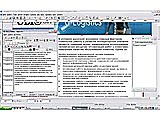 Scribus is a professional typesetting and page layout program, available on all major platforms but also for OS/2 and GNU/Hurd. It provides press-ready PDF output, but a user-friendly and modern interface. It supports color separation, ICC profiles, CMYK and spot colors.
Scribus is a professional typesetting and page layout program, available on all major platforms but also for OS/2 and GNU/Hurd. It provides press-ready PDF output, but a user-friendly and modern interface. It supports color separation, ICC profiles, CMYK and spot colors.
 Paperwork is a GUI to make papers easily searchable using OCR. The basic idea behind Paperwork is "scan & forget" : You should be able to just scan a new document and forget about it until the day you need it again.
Paperwork is a GUI to make papers easily searchable using OCR. The basic idea behind Paperwork is "scan & forget" : You should be able to just scan a new document and forget about it until the day you need it again.
 A simple terminal UI for git commands, written in Go with the gocui library.
A simple terminal UI for git commands, written in Go with the gocui library.
 TEA is powerful text editor that provides hundreds of text processing functions. It supports QML plugins and external scripts. TEA can open plain text files, FB2, Ebook, ODT, DOCX, Abiword, KWord KWD, SWX, PDF, DJVU. Other features: Built-in MC-like file manager. Speech Dispatcher support Spellchecker (using the aspell or/and Hunspell). Tabbed layout engine. Syntax highlighting for C, C++, Bash script, BASIC, C#, D, Fortran, Java, LilyPond, Lout, Lua, NASM, NSIS, Pascal, Perl, PHP, PO (gettext
TEA is powerful text editor that provides hundreds of text processing functions. It supports QML plugins and external scripts. TEA can open plain text files, FB2, Ebook, ODT, DOCX, Abiword, KWord KWD, SWX, PDF, DJVU. Other features: Built-in MC-like file manager. Speech Dispatcher support Spellchecker (using the aspell or/and Hunspell). Tabbed layout engine. Syntax highlighting for C, C++, Bash script, BASIC, C#, D, Fortran, Java, LilyPond, Lout, Lua, NASM, NSIS, Pascal, Perl, PHP, PO (gettext
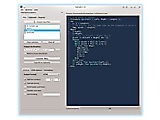 Highlight converts sourcecode to HTML, RTF, LaTeX, TeX, SVG, Pango, BBCode and terminal escape sequences with coloured syntax highlighting. Language definitions and colour themes are customizable Lua scripts. It provides a plug-in interface to tweak syntax parsing and coloring. LSP servers can be used to add semantic highlighting.
Highlight converts sourcecode to HTML, RTF, LaTeX, TeX, SVG, Pango, BBCode and terminal escape sequences with coloured syntax highlighting. Language definitions and colour themes are customizable Lua scripts. It provides a plug-in interface to tweak syntax parsing and coloring. LSP servers can be used to add semantic highlighting.
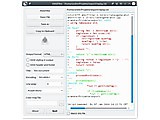 Ansifilter converts ANSI terminal escape sequences to HTML, RTF, BBCode, Pango Markup, LaTeX and Plain TeX. It also converts ANSI art files (CP437, BIN, XBIN, TND) to HTML or RTF.
Ansifilter converts ANSI terminal escape sequences to HTML, RTF, BBCode, Pango Markup, LaTeX and Plain TeX. It also converts ANSI art files (CP437, BIN, XBIN, TND) to HTML or RTF.
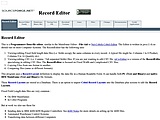 Record Editor is a data file editor for CSV (Comma/Tab delimited values) files, fixed field width files, and XML files. This program uses a record-layout definition to display the data file in a human-readable form. It can handle PC (text and binary), Unix (text and binary), and native IBM mainframe (text and binary) file formats. It is similar to Net-Cobol's Cobol-Editor or Compuware's FileAid.
Record Editor is a data file editor for CSV (Comma/Tab delimited values) files, fixed field width files, and XML files. This program uses a record-layout definition to display the data file in a human-readable form. It can handle PC (text and binary), Unix (text and binary), and native IBM mainframe (text and binary) file formats. It is similar to Net-Cobol's Cobol-Editor or Compuware's FileAid.
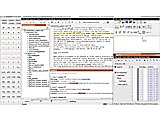 RTextDoc is a structured text editor for typesetting. It supports AsciiDoc, DocBook and LaTeX for authoring notes, books, web pages, man pages, or websites and blogs. It provides instant grammar and spell checking, integrated dictionaries, WYSIWYG BibTeX equations, HTML from and to LaTeX conversion. It also includes a PDF output viewer, and can be used portably without installation.
RTextDoc is a structured text editor for typesetting. It supports AsciiDoc, DocBook and LaTeX for authoring notes, books, web pages, man pages, or websites and blogs. It provides instant grammar and spell checking, integrated dictionaries, WYSIWYG BibTeX equations, HTML from and to LaTeX conversion. It also includes a PDF output viewer, and can be used portably without installation.
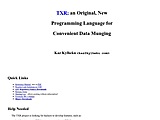 TXR is a "data munging" language which combines a convenient text extraction notation that with an innovative, feature-rich Lisp dialect.
TXR is a "data munging" language which combines a convenient text extraction notation that with an innovative, feature-rich Lisp dialect.
 A way to freely manipulate objects exported from C++ to scripts using arithmetic, parentheses and assignment. Enables compilation independent manipulation of the C++ objects from an external sources application can take input from, such as: config files, command-line or UI controls. Implementation loosely follows ECMA Script specification.
A way to freely manipulate objects exported from C++ to scripts using arithmetic, parentheses and assignment. Enables compilation independent manipulation of the C++ objects from an external sources application can take input from, such as: config files, command-line or UI controls. Implementation loosely follows ECMA Script specification.
 Rotcelloc is an application that manages your movie, TV-series and games collection. It takes CSV-files, or a Steam username, as its input, and outputs JSON files and a static web application that can be used to view and search a collection. Rotcelloc will download posters for your collection, download metadata (plot summary, developer or director name, metascore) and generate a pretty (static) web application that can be used to view, search, filter and sort your collection in many ways. All f
Rotcelloc is an application that manages your movie, TV-series and games collection. It takes CSV-files, or a Steam username, as its input, and outputs JSON files and a static web application that can be used to view and search a collection. Rotcelloc will download posters for your collection, download metadata (plot summary, developer or director name, metascore) and generate a pretty (static) web application that can be used to view, search, filter and sort your collection in many ways. All f
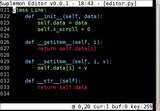 Suplemon is a modern, slick and intuitive console text editor with multi cursor support. Suplemon replicates Sublime Text style functionality in the terminal with the ease of use of Nano.
Suplemon is a modern, slick and intuitive console text editor with multi cursor support. Suplemon replicates Sublime Text style functionality in the terminal with the ease of use of Nano.
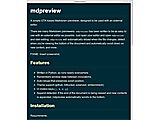 A simple GTK-based Markdown previewer, designed to be used with an external editor. There are many Markdown previewers. mdpreview has been written to be as easy to use with an external editor as possible. Just open mdpreview, open your editor and start editing. mdpreview will automatically reload when the file changes, detect when you're viewing the bottom of the document and automatically scroll down on new content, and more. It includes themes that closely resemble github, and bitbucket.
A simple GTK-based Markdown previewer, designed to be used with an external editor. There are many Markdown previewers. mdpreview has been written to be as easy to use with an external editor as possible. Just open mdpreview, open your editor and start editing. mdpreview will automatically reload when the file changes, detect when you're viewing the bottom of the document and automatically scroll down on new content, and more. It includes themes that closely resemble github, and bitbucket.
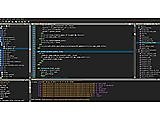 Arcadia is a minimalistic editor (IDE) for the Ruby language written in Ruby using the classic Tcl/Tk GUI toolkit and developed with Arcadia itself. Some features include an editor with source browsing, syntax highlighting, and code completion, debug support, the ability to work on any platform where Ruby and Tcl-Tk work, a highly extensibility architecture, and support for RAD GUI building.
Arcadia is a minimalistic editor (IDE) for the Ruby language written in Ruby using the classic Tcl/Tk GUI toolkit and developed with Arcadia itself. Some features include an editor with source browsing, syntax highlighting, and code completion, debug support, the ability to work on any platform where Ruby and Tcl-Tk work, a highly extensibility architecture, and support for RAD GUI building.
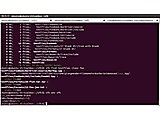 SFK combines a hundred command-line and file operation tools into a single binary. It operates on single files, directories or trees, and even zip/tar archives. It provides text searching (also in binary files), search and replace operations, checksum generation, locating duplicate content, file splitting and merging, CR/LF linebreak conversion, hexdumping, colorization. There are also instant servers for FTP and HTTP or direct file transfers, or debug TCP/UDP and HTTP connections. It's also rel
SFK combines a hundred command-line and file operation tools into a single binary. It operates on single files, directories or trees, and even zip/tar archives. It provides text searching (also in binary files), search and replace operations, checksum generation, locating duplicate content, file splitting and merging, CR/LF linebreak conversion, hexdumping, colorization. There are also instant servers for FTP and HTTP or direct file transfers, or debug TCP/UDP and HTTP connections. It's also rel
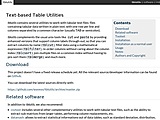 tblutils complements the usual unix tools like cut and paste by providing enhanced versions that support column labels through-out, so that you can extract columns by name (tblcut), filter data using a mathematical expression (tblfilter), re-order columns without caring about the column index (tblcsort), join multiple files on a common index without having to pre-sort them (tblmerge), and much more.
tblutils complements the usual unix tools like cut and paste by providing enhanced versions that support column labels through-out, so that you can extract columns by name (tblcut), filter data using a mathematical expression (tblfilter), re-order columns without caring about the column index (tblcsort), join multiple files on a common index without having to pre-sort them (tblmerge), and much more.
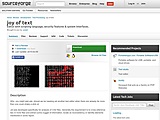 Joy of text is text editor, which includes a powerful ECCE-like scripting language for system tool integration and reusing any machine-readable input. It recovers easily from crashes, can interface with helper and utility applications, provides many default library commands, macro-scriptability, debugging, includes spell checking, binary conversion routines (for office documents or pdf files), enables tabular text editing, and can deal well with larger file sizes.
Joy of text is text editor, which includes a powerful ECCE-like scripting language for system tool integration and reusing any machine-readable input. It recovers easily from crashes, can interface with helper and utility applications, provides many default library commands, macro-scriptability, debugging, includes spell checking, binary conversion routines (for office documents or pdf files), enables tabular text editing, and can deal well with larger file sizes.
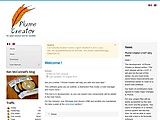 Productivity tool for authors of novels. From the homepage: An open-source tool for novelists. Are you a writer ? Plume Creator will help you with this hard task! This software gives you an outliner, a distraction-free mode, a note manager and much more! This tool is in development, so you can expect new components will be added in the near future.
Productivity tool for authors of novels. From the homepage: An open-source tool for novelists. Are you a writer ? Plume Creator will help you with this hard task! This software gives you an outliner, a distraction-free mode, a note manager and much more! This tool is in development, so you can expect new components will be added in the near future.
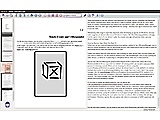 YAGF is a graphical front end for Tesseract and Cuneiform OCR Systems under the Linux OS. With YAGF you can open already scanned image files (including PDF and multi-paged TIFF) or obtain new images via XSane (scanning results are automatically passed to YAGF). Once you have a scanned image you can select particular image areas for recognition, set the recognition language and so on. YAGF also provides some OCR assistance like image restoration for poor quality images, skew correction, text ma
YAGF is a graphical front end for Tesseract and Cuneiform OCR Systems under the Linux OS. With YAGF you can open already scanned image files (including PDF and multi-paged TIFF) or obtain new images via XSane (scanning results are automatically passed to YAGF). Once you have a scanned image you can select particular image areas for recognition, set the recognition language and so on. YAGF also provides some OCR assistance like image restoration for poor quality images, skew correction, text ma
|